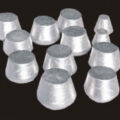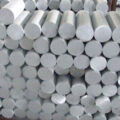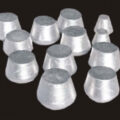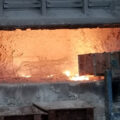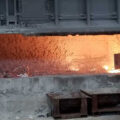The main factors of aluminum alloy modification process are: modification temperature, modification time, type and amount of modification agent.

1. Modification temperature. Higher temperature is beneficial to the modification reaction, the recovery rate of sodium is high, the modification speed is fast, and the effect is good. But the modification temperature should not be too high, too high will sharply increase the oxidation and absorption of the molten aluminum, and increase the iron impurities in the molten aluminum, reducing the service life of the crucible. Generally speaking, the modification temperature should be selected slightly higher than the pouring temperature. This prevents the modification temperature from being too high, can reduce the time for adjusting the temperature after the modification, and is beneficial to improve the modification effect and the metallurgical quality of the molten aluminum.
2. Modification time. The higher the modification temperature and the better the contact between the molten aluminum and the modification agent, the shorter the modification time required. The modification time should be determined on the basis of experiments according to specific conditions. If the modification time is too short, the modification reaction will not proceed completely; if the modification time is too long, it will increase the burning loss of the modifier and increase the absorption and oxidation of the alloy.
The modification time consists of two parts: the covering time of the modification agent is generally 10 to 15 minutes, and the pressing time is generally 2 to 3 minutes.
3. Type and dosage of modifier. The type and amount of modifier should be selected according to the type of alloy, casting process and specific requirements for organization control. Choosing a non-toxic, non-polluting and long-lasting modification effect is the current development direction of aluminum alloy smelting technology.
In aluminum modification process practice, it should be considered that the reaction of the modifier may not proceed completely, so the amount of modifier should not be too small, otherwise the modification effect will not be good. However, the amount of modifier should not be too much, too much will cause excessive modification. Therefore, the amount of modifier is generally specified to account for 1% to 3% of the weight of the charge. In production, usually adding 2% can ensure a good modification effect. For metal castings, the amount of modifier can be appropriately reduced. When a general modifier is used, in addition to the modification effect, the requirements for the coverage and refining capacity of the modifier should also be considered. Usually, the amount of the modifier is 2% to 3% by weight of the molten aluminum.

